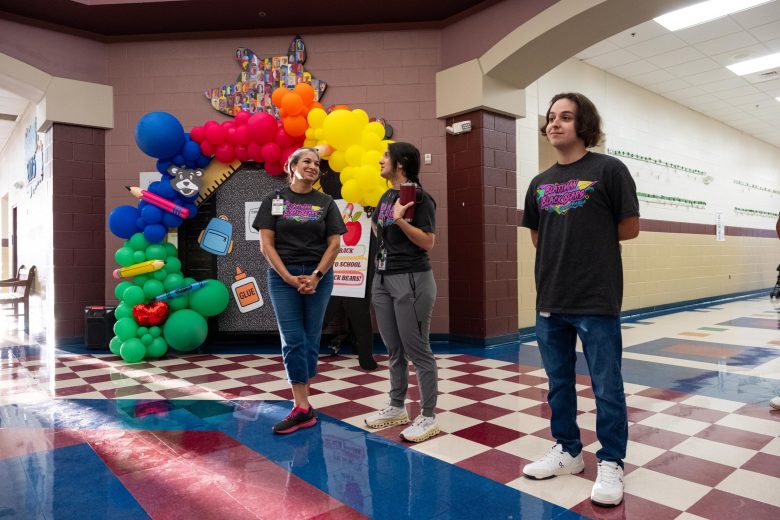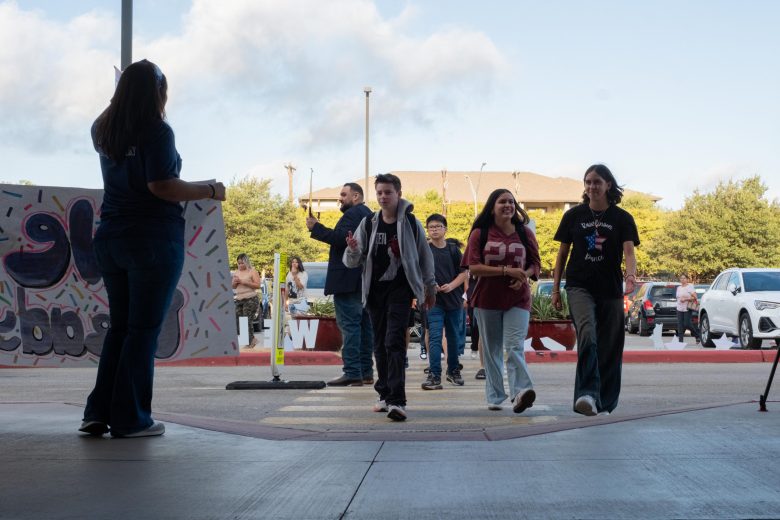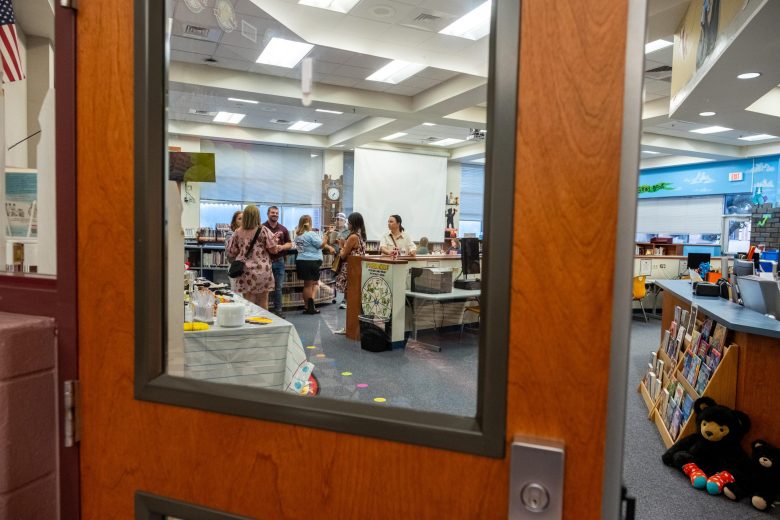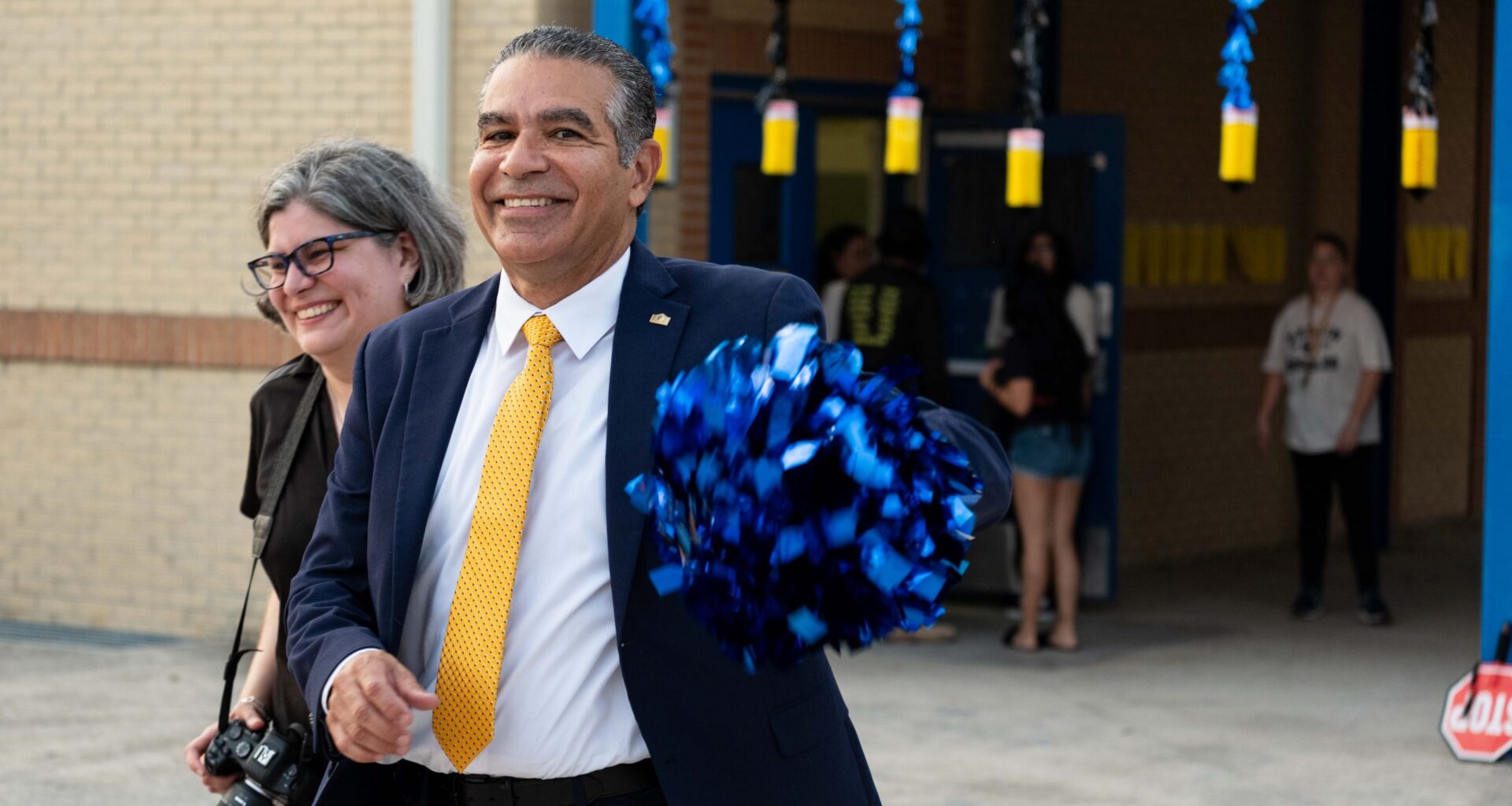School is back in session for many in San Antonio, and most districts in the area kicked off the year with good news: fewer teaching vacancies on the first day of school than usual.
That may be one of the first measurable outcomes from an $8.5 billion infusion of public school funding the Texas Legislature passed in May. School districts were required to use funds from House Bill 2, meant to address teacher shortages and phase out the use of uncertified teachers, mostly for teacher raises.
District leaders and teaching experts attribute the lower vacancy rates to an added emphasis on workplace culture and targeted recruitment, in addition to the prioritization of full-time classroom teachers by state lawmakers.
Some of these strategies seem to already be working, especially in San Antonio’s largest school districts. For the 2025-26 cycle, San Antonio Independent School District had fewer than half the number of vacancies the district usually has when kicking off a new school year.
This year, SAISD had fewer than 85 teacher vacancies to start the year, compared 170 in 2024 and 261 the year before that, district spokesperson Laura Short said the week before school started at SAISD.
“And we have excellent substitute coverage numbers,” district spokesperson Laura Short said the week before school started at SAISD. “On the first day of school, we will have 100% of our classrooms filled with a caring adult.”
Closing the gaps
SAISD’s current teacher pool is approximately 2,800, putting the district’s vacancy rate somewhere less than 3%. Student enrollment at SAISD is approximately 44,000.
District officials link the drop in vacancies to a couple of factors.
SAISD has several “grow your own” programs to fill out its workforce, which create paid apprenticeships for college students and teaching certification pathways for current district employees through state and city grants.
 Elementary school teachers wait to greet students for the first day of school at Blattman Elementary on Aug. 11. Credit: Amber Esparza / San Antonio Report
Elementary school teachers wait to greet students for the first day of school at Blattman Elementary on Aug. 11. Credit: Amber Esparza / San Antonio Report
The Texas Education Agency also awarded SAISD a three-year grant of $160,000 to “improve teacher development, student learning, and retention of strong educators.”
“We know it takes time and effort to develop great teachers,” said Dr. James Harrell, chief of human capital management, in a statement to families. “These partnerships help us continue building a teacher workforce that reflects and strengthens our community.”
Over at Northside ISD, district officials reported 116 teaching vacancies to start the year, with a total of roughly 6,600 teachers in place on Aug. 11 — the first day of school for the district — putting the vacancy rate at about 1.7%. Projected enrollment for the districts is about 98,500, following a steady decrease in enrollment each year.
For the 2024-25 school year, NISD had 145 vacancies around the same time. The year before that, the district reported 185 vacancies.
South San Antonio ISD, a much smaller school district serving about 7,400 students and currently under state control, reported 13 teaching vacancies and 528 teachers in place on Aug. 11, but did not provide data from past years.
District officials also explained that vacancy reports can change every day, especially at the start of a school year. Most San Antonio school districts face declining enrollment each year, which could mean fewer classrooms and teachers are needed.
There are also outlying school districts, which reported very few or no teacher vacancies for the start of the 2025-26 academic year.
- Medina Valley ISD reported zero vacancies and 647 teachers
- Alamo Heights ISD reported zero vacancies and 330 teachers
- Southside ISD reported seven vacancies and 393 teachers
- East Central ISD reported four vacancies and approximately 700 teachers
Edgewood, Southwest, Harlandale and Judson ISDs did not respond to requests for their teacher vacancy data.
Innovation helps recruit
Teacher vacancy numbers at North East ISD, which has a projected enrollment of 55,000 students for the 2025-26 school year, paint a similar picture of closing teaching gaps.
Before the first day of school on Aug. 11, officials reported fewer than 50 teaching vacancies and 3,900 active teachers. Compared to the 2024-25 school year, the vacancy rate dropped by nearly two thirds.
The district reported having 130 teaching vacancies at the start of the 2024-25 cycle and 120 vacancies for the 2023-24 school year.
“We’ve spent a lot of time focused on culture and climate,” NEISD superintendent Sean Maika during an Aug. 20 interview.
He also credits the low teaching vacancy rate to the “innovative” school models the district offers, like its Institute of Cybersecurity and Innovation and the Space and Engineering Technologies Academy. The district also self-funds its employee health care package, Maika said, which keeps health insurance premiums affordable for staff.
 Students are greeted by teachers during morning drop-off on the first day of classes at Rawlinson Middle School on Aug. 11. Credit: Amber Esparza / San Antonio Report
Students are greeted by teachers during morning drop-off on the first day of classes at Rawlinson Middle School on Aug. 11. Credit: Amber Esparza / San Antonio Report
Like all public school districts in Texas, NEISD implemented raises for every teacher with more than two years of experience using HB 2 funds.
For a district of NEISD’s size, teachers with two to five years of experience got $2,500 raises and teachers with more than five years of experience received $5,000 raises.
Not wanting to leave less experienced teachers behind, NEISD’s board voted to implement raises of $1,000 and $1,500 for teachers with one or two years of experience respectively. The district also increased its starting teacher pay to $57,500, an amount that falls slightly behind the starting pay at neighboring school districts.
And like most school districts in the area, NEISD increased pay or added stipends for most employees for the 2025-26 school year while facing an $18 million budget deficit.
“It’s made it much more difficult on us, quite frankly, but it’s better for our employees,” Maika said.
Burnout isn’t just about pay
Jessica Werner, founder of teaching mentorship and training service Northshore Learning and an education professor at the University of Notre Dame, said the driving force behind teacher burnout is student behavior and overwhelming workloads.
While increasing pay is a good step to reduce burnout and teaching vacancies, it’s not the only strategy school districts can use, she said. Teachers want more individualized support and training, especially when it comes to working with special needs students, a population which grows every year in Texas.
“That goes back to behavior being the number one reason they’re leaving,” Werner said. “They want working conditions and workplace culture that makes them feel like they’re doing their job really well.”
 Teachers and parents chat and snack in the children’s library during the first day of school at Blattman Elementary on Aug. 11. Credit: Amber Esparza / San Antonio Report
Teachers and parents chat and snack in the children’s library during the first day of school at Blattman Elementary on Aug. 11. Credit: Amber Esparza / San Antonio Report
At NEISD, the teaching vacancies are “programatic,” meaning most shortages are for special education, dual-language and bilingual teaching positions, following a nationwide trend.
To make teachers feel more supported, Werner suggested school districts invest in more instructional coaches and specialized staff. She also recommended more mentoring opportunities for new teachers and campus administrators, since most teachers who leave the profession do so within the first two years on the job.
HB 2, which top state leaders have celebrated as a “record” investment in public schools, largely prioritizes raises for teachers with two or more years of experience, leaving out some campus support staff and early career teachers.
Maika, who heads the second-largest school district in San Antonio, said campuses struggle just as much when there aren’t enough support staff like custodians and bus drivers compared to when there aren’t enough teachers.
“It’s super important that we value everyone in our system, not just teachers,” he said.
